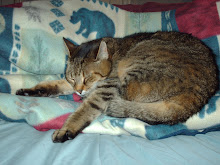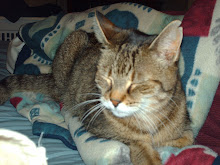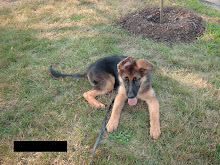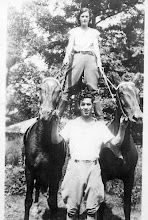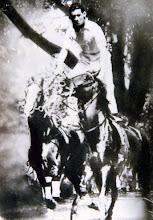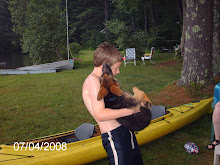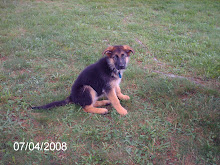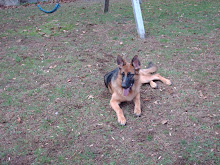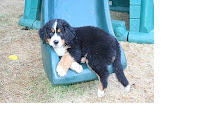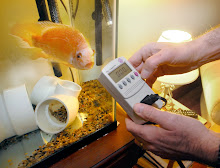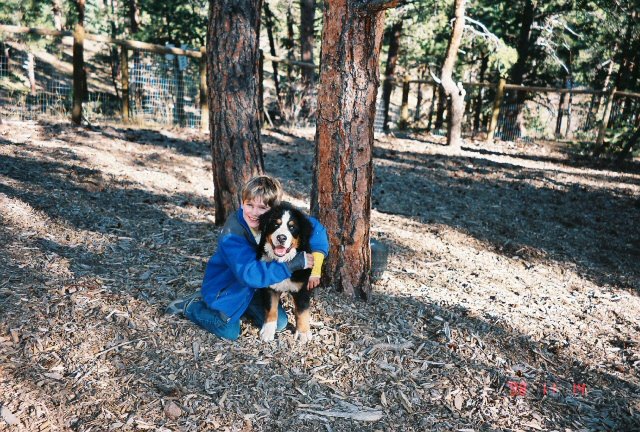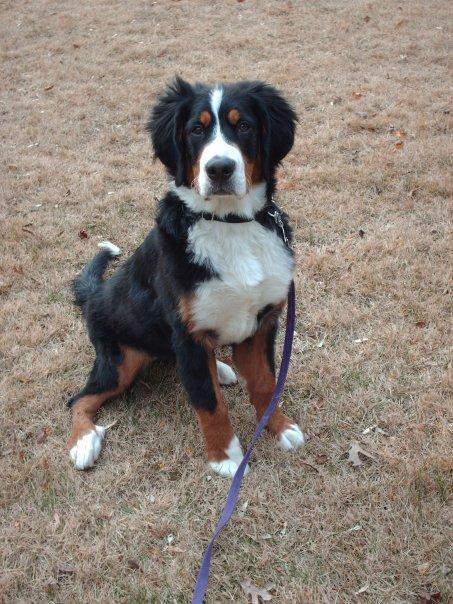Tuesday, May 8, 2012
Manatee world: We all live in it!
I knew right away that is probably was not a good idea for such a large creature - whatever it was - to be floating so close to land - and even worse possibly - to people who might do them harm.
The whatever it was turned out to be manatees, ABC news reports.
And according to that site: "Home video shows group of sea cows splashing around in the shallow surf."
Phew.
The HuffPo also reports that the lifeguards worked to clear the area,to protect the sweet "sea cows." Go lifeguards!
And for your viewing delight, here's the video of what it looked like at the beach -for some lucky folks who got up close and personal.
police accuse man of choking dog to death after it urinated on him
BRANFORD, CONN. — A local man was arrested in connection with the choking death of his dog, which was found in a plastic bag in Madison in January.
Alex Wullaert, 22, of 57 East Main St., is charged with cruelty to animals and littering. His dog, which was a pit bull, Boxer mix, was discovered on March 11 when a resident located it discarded in a plastic bag in the woods by a lake and reported it to police, according to State Animal Control Officer Todd Curry.
An identifiable microchip that was recovered during a necropsy led Madison Police Officer Kimberly Lauria to identify Wullaert as the owner, Curry said.
“Through her further diligent investigation, Officer Lauria was able to contact and later interview Wullaert, who confessed that he choked the animal at his Branford home after it urinated on his leg and bit him,” Curry said.
Police said Wullaert placed the dead dog in a plastic bag and discarded it in Madison.
Wallaert was released on a written promise to appear at 9 a.m. May 15 at Superior Court in New Haven.
Scholarship being offered in memory of animal lover
The award is named to reflect the principles in the book “How Full Is Your Bucket,” by Tom Rath and Donald Clifton, the statement said. The book “describes how a person - best friend, coworker, or stranger - can (through their own positive words and deeds), fill your ‘bucket’ making you feel more positive,” the statement said.
“It is this principle that guided the life of Suzan D’ Antonio as a veterinary technician and an animal rights advocate - she filled buckets. The scholarship then, will go to those applicants who ‘fill the buckets’ of others by being an advocate for those who have no voice,” the statement said.
The statement also noted that: “Based on this premise, this scholarship is about service - the applicants’ service to animals and the Purr Project Foundations’ service to the applicant. The Purr Project has dedicated this scholarship in Suzan’s name in order to support you and fill your bucket.”
Academics are a component of the overall formula of how the winning applicant is chosen, but the “scholarship is for those who not only have ideas but for those who are about action in serving animals.”
“Simply put, we want doers. Each and every application will be reviewed with the understanding that each applicant is an individual and that there are going to be different ideas, different experiences, and different manners of service. This service may take many forms: helping maintain feral colonies, writing a newsletter, volunteering at a local shelter, helping with anti-cruelty programs, and more,” the statement said.
The scholarship is awarded yearly, so applicants are encouraged to reapply if they are not successful in a prior year, the statement said.
Applicants must be current residents of Connecticut (when not attending school).
“The important thing to understand is that this scholarship is for students who are or will be enrolled in vet-tech, pre vet, or veterinary medicine programs. We understand however, that academic programs can vary widely,” the statement said. “Therefore, if your institution does not have one of these programs but your intent is to serve animals in one of these capacities, then you should apply anyway. The Purr Project, does not condone animal testing research (i.e. pharmaceuticals), and will not grant scholarships in these areas.”
For information on the scholarship, The Purr Project Foundation, or to obtain an application, write to The Purr Project Foundation at 12 Winged Foot Court, Cheshire, 06410; call (203) 272-9590, or go to: purrproject.org where you can download a copy of the application.
Applications must be received by June 30 to be considered for the 2012 award. The Purr Project Foundation, Inc. is a certified 501C3 charitable organization and relies on contributions - 100 percent of which are applied to scholarship awards and are tax deductible.
Donations also may be sent to the address in Cheshire. Every donation will receive a thank you and receipt by return mail.
Monday, April 9, 2012
Eagle mama is too lovely not to share everywhere
Warning: It's addicting (thank you Raptor Research nest cam and Decorah Fish Hatchery.)
Free live streaming by Ustream
Hero dog! Isn't that redundant?
It tried to post the video here but it would not let me - so here is the link.
Tuesday, February 21, 2012
Cute pets. And lots of them
See all those pets here.
"As in the past, finalists were chosen for originality, spontaneity, beauty and photo quality. After a comprehensive sorting process by intern Celia Seupel, judges picked three entries in each category. The best three positions were tallied from those votes. The Freeman’s Paul Kirby was recruited at the last minute to break tied entries."
Thursday, December 29, 2011
Wednesday, December 21, 2011
Bounty offered to wolf hunters, story says
Read more here.
Saturday, October 29, 2011
Friday, October 14, 2011
Watch for that moose
The moose was seen around 9 a.m., the agency said in a statement.
DEEP said it advises motorists to “slow down and drive defensively should a moose be spotted on or near the roadway,” the statement said.
“If motorists see this moose or any moose near a major highway, they should report it to the DEEP Environmental Conservation Police...and to local authorities,”the statement said.
DEEP police can be reached at 860-424-3333.
“September through October is the peak of the breeding season for Connecticut’s small but expanding moose population, which means an increase in moose movements and a greater potential for moose to cross roads,” the statement said.
“Moose, with their darker color and much taller stance, are particularly difficult to see at night and, once struck, are more likely to collapse through the vehicle windshield,” the statement said.
Tuesday, October 11, 2011
Fwd: Citi Pond at Bryant Park: 2nd Annual Family Day with Christmas Feet!
| |||||||||||||
--
Thursday, September 15, 2011
Thursday, August 25, 2011
A Story of Puppy and People Love
It wasn’t quite so easy for Tracy. She ended up in labor and gave birth in several different locations!
A chocolate Labrador Retriever, Tracy was kicked out of her home when she went into labor. The people with whom she lived decided that a mama dog and a passel of puppies was more trouble then she was worth on a Monday, so they called Animal Control in Union, South Carolina, to come and take her away.
Animal Control officers responded quickly and went to get Tracy. They also made an important call – one to a nearby animal sanctuary called Dreamweaver Farm, home of Carolina Poodle Rescue (CPR).
Tracy was no poodle. She had no fancy clip, no pedigree – only a new mother’s love and heart. Heather Sealy, head of animal control in Union County, has a big heart, too. Even though she was on vacation, she interrupted her own time off to make calls on Tracy’s behalf. She knew that even though Tracy wasn’t a poodle, the no-kill sanctuary at Dreamweaver Farm wouldn’t turn Tracy away.
And they didn’t.
CPR director Donna Ezell was on the way to the Animal Shelter to pick up a small dog when Heather’s phone call came in: Was there room at Dreamweaver Farm for … well, more than just one more.
Heather relayed how Tracy had given birth to Puppy 1 as the Animal Control personnel were taking her out of their truck. The puppy fell to the ground, but survived. By the time Donna reached the Union shelter, Tracy had given birth to Puppy 2 and Puppy 3.
Friday, May 13, 2011
West Haven Animal Shelter Gets Grant to Vaccinate Dogs for Influenza
Because CIV is relatively new, most dogs have not built up immunity to the disease. Dogs can get the disease by being exposed to those that have it, as well as playing with toys or drinking from bowls used by other dogs. People can also unwittingly spread the germ if they come in contact with infected dogs.
"Shelters and rescue organizations are often the first places that new diseases already in the community become evident. Dogs come in from the community and are released back into it, and often move to and from states with confirmed cases," said Liz Neuschatz, director of the Petfinder.com Foundation. "Canine flu can be a real problem for shelters, where one sick dog can cause an outbreak through an entire facility. We are pleased to be part of this effort to help protect the community by providing canine flu vaccine to West Haven Animal Shelter."
Dog flu is a growing problem throughout the U.S. It has been confirmed in 35 states so far, but tracking the disease is hard because it is so difficult to diagnose. Dogs are contagious before they show any symptoms. By the time the dog starts coughing, it's too late. Virtually all dogs exposed to the virus will become infected, and some will get more serious infections, such as pneumonia, which can be fatal. Dogs that go to doggie daycare, boarding facilities, groomers and shows and are vaccinated for canine cough (Bordetella) are also at risk for canine flu. Information about canine flu is available at http://www.doginfluenza.com/.
The grant for Building Community Immunity seeks to protect all at-risk dogs in the community, including those in close proximity with other dogs, as is the case with shelters and rescue facilities. It also provides greater assurance to adopting families that their new pets will be healthier and much less likely to be sick or get more serious, and sometimes fatal, infections. The grant further links Petfinder.com member shelter and rescue grant recipients with local veterinarians to protect all adoptable dogs in their care. The program promotes veterinary visits for wellness exams and, when appropriate, the second dose administration of Nobivac Canine Flu vaccine.
About Petfinder.com Foundation
The Petfinder.com Foundation was created in 2003 to respond to needs of its Petfinder member shelters and rescue groups and to assist them in ensuring that no pet is euthanized for lack of a home. The vaccine grant will help keep dogs healthy and adoptable.
About Intervet/Schering-Plough Animal Health
Intervet/Schering-Plough Animal Health, based in Boxmeer, the Netherlands, is focused on the research, development, manufacturing and marketing of animal health products. The company offers customers one of the broadest, most innovative animal health portfolios, spanning products to support performance and to prevent, treat and control disease in all major farm and companion animal species. Intervet/Schering-Plough Animal Health; subsidiaries of Merck & Co. Inc., Whitehouse Station NJ, USA. For more information, visit http://www.intervet.com/.
Tuesday, April 26, 2011
DEP Press Release - Be Bear Aware
The Connecticut Department of Environmental Protection (DEP) reminds residents to take steps to reduce contact and conflicts with bears. These steps are becoming increasingly important as bears emerge from winter hibernation looking for food and because the state's bear population is growing. This growing and expanding population is estimated at between 300 to 500 bears, increasing the need for people to know how to prevent problems. In 2010, the DEP received over 3,000 bear sighting reports from 115 of Connecticut's 169 towns. This spring, the DEP has already received several reports of bears coming into populated areas and interacting with humans and animals. When bears emerge from their winter dens, natural foods are scarce and, as a result, bears are often attracted to human-provided foods found near homes. On rare occasions they may attack livestock.
"As Connecticut's bear population continues to grow, residents of our state should familiarize themselves with steps they can take to avoid contact with this species," said Susan Frechette, Deputy Commissioner of the DEP. "Most unwanted contacts occur when bears are attracted close to homes by food – such as bird feed, refuse and residue on grills – that is made available to them. This can lead to more serious problems, including habituated bears that have lost their fear of humans. The best method to prevent problems with bears is to avoid feeding them by taking down bird feeders in the spring, keep garbage cans in a shed or a garage or tightly secured and keep outdoor cooking equipment clean."
The two most common food attractants are bird feeders and poorly-stored household garbage. Birdfeeders should be taken down and put away during spring, summer, and fall. Household garbage should be stored in closed garages or sheds. In cases where this can't be done, ammonia should be added to the garbage bags and cans to discourage pilfering by bears and other animals. Other items that can attract bears include pet and livestock foods, grease and drippings on barbecue grills, sweet or fatty food scraps in compost piles, and fruit on or dropped from trees.
Although uncommon, bears will attack and kill livestock, such as sheep, goats, pigs, and fowl. They also can destroy unprotected beehives. One of the best precautions for these problems is well-maintained electric fencing. Other recommendations for livestock growers include moving animals into sheds at night, keeping feed contained, keeping animals as distant from forested areas as possible, and using guard dogs.
The DEP encourages residents to take the following simple steps to avoid problems with black bears:
1. Never intentionally feed bears.
2. Take down, clean, and put away birdfeeders by late March. Store the feeders until late fall. Clean up spilled seed below feeder stations.
3. Store garbage in secure, airtight containers inside a garage or storage area. Double bagging and the use of ammonia will reduce odors that attract bears. Periodically clean garbage cans with ammonia to reduce residual odor. Garbage for pickup should be put outside the morning of collection and not the night before.
4. Avoid leaving pet food or dishes outdoors at night.
5. Keep barbecue grills clean. Store grills inside a garage or shed.
6. Avoid placing meat scraps or sweet foods in compost piles.
7. Protect beehives, livestock, and berry bushes from bears with electric fencing.
8. Keep dogs on a leash outdoors. A roaming dog might be perceived as a threat to a bear or its cubs.
If you encounter a bear while hiking, make your presence known by yelling or making other loud noises. Usually, a bear will move from an area once it detects humans. If a bear does not retreat, slowly leave the area and find an alternate hiking route. While camping, be aware that most human foods are also attractive to bears. Keep a clean campsite, and make sure food and garbage are secure (for example, keep food in a cooler stored in the trunk of a car).
Prevention and tolerance are the basis for learning to live with bears in Connecticut. It is important to remember that although black bears regularly travel near houses, they are rarely aggressive toward humans and can usually be frightened away by making loud noises, throwing sticks, or spraying with a garden hose. However, it is not uncommon for bears that have found food, such as birdseed from feeders, to ignore such disturbances. In the rare instance when a bear appears to be aggressive toward people, residents should contact the DEP Wildlife Division Sessions Woods office at 860-675-8130 (Mon.-Fri. from 8:30 AM-4:30 PM) or the DEP's 24-hour dispatch line (860-424-3333) during weekends and non-business hours.
Bear sightings reported by the public provide valuable information to assist the DEP Wildlife Division in monitoring the black bear population. Anyone who observes a black bear in Connecticut is encouraged to report the sighting on the DEP's Web site (www.ct.gov/dep) or call the Wildlife Division's Sessions Woods office. Some bears have been ear-tagged for research. Information on the presence or absence of tags, including tag color, letters and numbering is particularly valuable. To obtain informational fact sheets about bears, visit the DEP's Web site or call the Sessions Woods office.
Monday, April 18, 2011
Get a view to Prince William and his bride, and have tea at the Fairfield Public Library
Garcia taught European history at the college level and is on staff as a Reference Librarian in the Fairfield Public Library system. She has presented papers at academic conferences in the United States and Great Britain, and has publications in her field of English history, one of which has been included in the Royal Historical Society Bibliography.
Monday, April 11, 2011
Immune Therapy Can Control Fertility in Mammals
NEW YORK (March 31, 2011) -- Researchers at Weill Cornell Medical College have shown that it is possible to immunize mammals to control fertility. They say their technique could possibly be used on other mammals -- including humans -- because fertility hormones and their receptors are species-non-specific and are similar in both females and males. For pets, the technique could be an alternative to castration and adverse effects of hormone administration.
In the Feb. 24 online issue of Genetic Engineering and Biotechnology Journal, the researchers say their newly synthesized novel chimeric genes produce bi-functional recombinant proteins that are antigenic. The antibodies can tamp down production of progesterone in females and testosterone in males. The most immediate use of this technique might be to control fertility in dogs and cats or other mammals in need of population control, says the study's lead investigator, Dr. Brij B. Saxena, the Harold and Percy Uris Professor of Reproductive Biology at Weill Cornell Medical College.
After extensive preclinical testing for the efficacy, safety and reversibility in animals, the immune therapy might be possible in humans as a treatment for androgen excess syndromes as well as an immunological method to control fertility, adds Dr. Saxena.
The new chimeric gene was engineered by Dr. Saxena and his Weill Cornell colleagues, Dr. Meirong Hao and Dr. Premila Rathnam, and then inserted into insect cells to produce recombinant bi-functional protein. Immunity against fertility can be provided by the production of a bi-functional antibody by active or passive immunization using the recombinant protein.
This new gene contains DNA sequences from two natural genes that are integral to fertility in mammals. One portion is the extracellular domain (ECD) of the ligand (hormone) binding region of the human lutropin/human chorionic gonadotropin receptor (ECD-hLH-R), which is present in the ovaries and testes. The other component is the unique C-terminal peptide of the human chorionic gonadotropin β-subunit (hCG β-CTP).
Key to development of this new chimeric gene and recombinant protein is the researchers' finding that the hLH-R and hCG-β-CTP recombinant proteins are antigenic -- meaning that they can produce an immune response in the body, and produce bifunctional antibodies with dual effect. The antibodies are able to block the hormone binding to the receptor and thus suppress the signal to produce ovarian hormones, specifically progesterone. The second component of the antibody specific to hCG β-CTP would neutralize the hCG-like material produced by the fertilized egg prior to or at the time of implantation. This would lead to lack of stimulation to promote progesterone production by the corpus luteum, resulting in the lack of proliferation of endometrial growth that is vital for the implantation of the fertilized egg -- thus preventing pregnancy.
The scientists are now working on methods to upscale the production of recombinant chimeric protein to be tested as antigens in dogs and cats.
The study was funded by Concept-II, New York, NY.
Dogs, Dogs and More Dogs
 The Fidelco Open House from 10 a.m. to 2:30 p.m. April 16 includes tours of the Fidelco campus, a West Hartford police K-9 demonstration and interactive sessions on how Fidelco guide dogs are trained and utilized by clients.
The Fidelco Open House from 10 a.m. to 2:30 p.m. April 16 includes tours of the Fidelco campus, a West Hartford police K-9 demonstration and interactive sessions on how Fidelco guide dogs are trained and utilized by clients. Tuesday, August 17, 2010
Experienced Pit Lover Needed
 The Woodbridge Animal Shelter in Woodbridge, Conn. has a a pit bull named "Sweetie" that needs a home.
The Woodbridge Animal Shelter in Woodbridge, Conn. has a a pit bull named "Sweetie" that needs a home. care of and is responsive to positive reinforcement," the statement said.
care of and is responsive to positive reinforcement," the statement said. Feel like fostering?

Thursday, July 8, 2010
Harper has fun
Fidelco grant will help give guide dogs to military veterans

Sunday, June 20, 2010
Dogs everywhere are crying
 She knew how much a dog can give
She knew how much a dog can giveRoberta C. Kaman, president and co-founder of The Fidelco Guide Dog Foundation, Inc. has diedm the organization said in a statement.
“We are saddened by Robbie’s passing,” Eliot D. Russman, Fidelco’s CEO an executive director said in the statement. “We will miss her presiding presence in our midst, the vision she brought to our organization and the passion with which she served our clients.”
Dogs and dog training were always in Kaman’s life, the statement said.
Kaman recently said in “Trust the Dog,” the new book about Fidelco, “I’ve never been without a dog,” the statement said,
"From the dogs on her grandfather’s farm, to the dogs her father trained for hunting, to the thousands of dogs she bred for Fidelco, canines were an important part of her life," the statement said.
Kaman was "bitten by the training bug early on when she attended a dog training class" in Manchester, Conn, the statement said.
"She proved to be a natural trainer and the town asked her to stay on and help with the classes," the statement said.
As she said, “Apparently I had an ear for the music.”
Over the years, Kaman and her friends raised and showed several breeds, including standard poodles, the statement said and she spent time mentoring with Dr. Allen Leventhal at his veterinarian practice in Bolton, Conn., the statement said.
She got her first German shepherd in 1958, "sowing the seeds for what would become a lifelong fascination with this extraordinary breed of dog," the statement said.
"In 1960, Kaman joined a local German shepherd club in New Haven and met Charlie Kaman, her future husband and founder of Kaman Aerospace. Together, they helped form the Fidelco Breeders Cooperative, the beginnings of what is now the Fidelco Guide Dog Foundation," the statement said.
The cooperative bred German shepherds for 20 years and donated them to guide dog schools and law enforcement.
From 1980, their home-based hobby grew dramatically to become an internationally accredited guide dog foundation that has placed more than 1,300 guide dogs with blind and visually disabled clients throughout the U.S. and Canada, the statement said.
Kaman was instrumental in developing the Fidelco “breed within a breed;” a German shepherd with the temperament, work ethic and stamina suited to guiding people who are blind, the statement said.
Fidelco "also pioneered its “In-community Placement” program in the U.S. Using this process, the Fidelco client is trained with the guide dog in their home area, allowing them to be more productive quickly," the statement said.
Kaman received numerous awards, including the prestigious Migel Medal Award from the American Foundation for the Blind and was honored as a Melvin Jones Fellow, the Lions Club’s highest level of recognition.
“When I get a positive phone call from a person with a Fidelco guide dog, I am always grateful,” Kaman is quoted as saying in the statment. “I realize that we’ve managed to help someone in a very personal and important way.”
The Fidelco Guide Dog Foundation, Inc., a non-profit 501(c)(3) organization based in Bloomfield, breeds, trains and places a unique type of German shepherd guide dogs with people who have visual disabilities.
Now in its 50th year of service, Fidelco relies solely on the gifts and the generosity of individuals, foundations, corporations and civic organizations that partner with us to “Share the Vision.”
In the photo: Roberta C. “Robbie” Kaman, president and co-founder of the Fidelco Guide Dog Foundation, Inc.
Editor's note: The information in this post was provided wholly by Jack Hayward, It is only lightly edited here.
Monday, June 14, 2010
Connecticut DEP says: Leave fawns alone

The Connecticut Department of Environmental Protection has issued a request asking residents to be aware that white-tailed deer are giving birth to fawns around the state and the babies should be left alone.
"With the advent of warm weather, more people are participating in outdoor activities, increasing the chances that someone will come across a tiny fawn. The fawn may appear to have been deserted, but that is usually not the case. The DEP Wildlife Division has been receiving an increasing number of phone calls from people concerned about finding fawns that appear to be orphaned or abandoned," the agency said in a statement.
"It is critical for people to leave deer fawns alone, as the animal’s instinctive behavior in its first weeks of life is to remain motionless and let danger pass. The fawn may appear helpless or abandoned, but it is behaving normally in response to a perceived threat. As newborns, the fawns have almost no body odor and their reddish brown coat with white spots makes them almost invisible to predators. Fawns often lie motionless on the ground surrounded by low vegetation and remain perfectly still even when approached by another animal. It is important to realize that young fawns likely do not need your help, and the doe is probably feeding nearby," the statemeent said.
"It is highly unlikely that a fawn found alone has been abandoned," Rick Jacobson, Director of the DEP Wildlife Division said in the statement. "It is best not to touch the fawn and to leave it where it was found for at least 24 hours to determine whether the adult is still returning for feedings. While waiting for the doe to return, it is important that both people and dogs stay away from the fawn. A truly orphaned fawn will show signs of distress by walking around aimlessly and calling out for several hours."
The agency noted that when "a doe gives birth to one or two fawns and nurses them, she leads them into a secluded habitat. Twin fawns may even be separated from each other. The doe then leaves them alone for extended periods of time. She returns to nurse them about three to four times a day, with feeding time lasting approximately 15 minutes. This pattern will continue for up to 3 weeks until the fawns are strong enough to accompany the doe or flee from danger"
"Although it may be natural to want to assist young fawns, caring for them does more harm than good," Jacobson said, also in the statement. "Raising fawns for successful return to the wild requires considerable knowledge of deer biology, feeding formulas, countless hours of care, and outdoor caging. Improper care results in underweight and undernourished animals or animals that are not able to return to the wild because they have become too accustomed to being around people. Removing fawn deer from the wild, raising them, and keeping them in captivity is illegal."
If a fawn has "truly been orphaned, it is best that the animal be placed in the care of a licensed wildlife rehabilitator with the skills, training, and state authorization to care for fawns. A fawn suspected of being orphaned should be left where it was found, and its location should be reported to a wildlife rehabilitator qualified to care for fawns," the statement said.
A list of wildlife rehabilitators and their contact information can be obtained on the DEP Web site at www.ct.gov/dep/wildlife, or by calling the DEP Wildlife Division at 860-424-3011, weekdays or the DEP Emergency Dispatch Center at 860-424-3333 (after hours or on weekends).
Editor's note: The information contained in this post was released by the Connecticut Department of Environmental Protection.
Tuesday, June 1, 2010
Get your pets vaccinated!
Rabies vaccines are $10. Dogs must be on leashes and cats in carriers, The clinics are open to all pet owners.
For more information, call Jim Vitelli at 203-937-3642 or e-mail pounddogs@yahoo.com
Pet Food Bank needs help
For further information, call 203-783-3279.
Stay Calm, But They're calling it "Feline Frenzy"
Dubbed, "Feline Frenzy," the events offer all cats older than 3 for free to a good home, the society said in a statement.
The adults cats are "cute, loving and playful. They’re well trained and will provide many years of companionship," the statement said.
In part, it is essential for people to consider adopting an older cat because "animal shelters and rescue groups everywhere are filled to the brim with felines, especially kittens, seeking their forever homes," during the summer, and more kittens mean the older animals stay in shelters a lot longer, the statement said.
The promotion is taking place in all of the agency’s locations, in Newington, Waterford, Westport and the New London PetSmart. The cats will come with the standard adoptions benefit package that is always available, the statement said and potential adopters should look for the "I Have Purrsonality" signs on their cages when they visit a adoption center, the statement said.
The adoptions benefit package includes: free 30-day policy of ShelterCare pet health insurance and free microchip by 24PetWatch; consultation with staff to help select the most suitable feline for your lifestyle; FIV/FeLV testing, flea treatment and deworming treatment; spay/neuter; appropriate vaccinations according to the age of the pet, including rabies; identification tags and rabies tag if applicable; carrier and stretch collar; starter supply of Hill’s Science Diet food and pet care information; and medical evaluation and treatment for problems that were diagnosed during the exam, the statement said.
Sunday, May 23, 2010
Kessy learns how to read
 It may not have been the flyers this cat read, but she sure read the love put into it
It may not have been the flyers this cat read, but she sure read the love put into itBy Pamela McLoughlin
A beautiful thing happened this week when my daughter Kathleen's beloved cat Kessy returned after a week AWOL.
Kessy, a sweet, gentle, affectionate purring machine who can easily withstand sudden tail pullings by toddlers, had never been out for more than a night
The skeptics among us thought she had fallen prey to a coyote, been hit by a car or catnapped because she's so nice.
But Kathleen kept believing and on Friday after school she created flyers with Kessy's picture, then went around the neighborhood with her best friend Jackie to distribute them.
I picked them up at dusk by the community center after distribution and as we pulled into the driveway Kathleen opened the door and jumped out of the moving car, as Jackie and I looked at each other, perplexed.
Kathleen had spotted fur in the deep grass, ran up to the cat and it turned out to be a black and white cat - not Kessy - who likes to hang out by our door.
But just as Kathleen saw it wasn't Kessy, she heard a meow from behind that she recognized and all Jackie and I could see was Kathleen's elated expression (car had just stopped moving) - something usually reserved for favorite band or boyfriend.
She picked up Kessy who was atypically skittish and smelled, we decided later, like dog, cigarettes and gasoline.
The first thing I said to Jackie was "Kessy must have seen the flyer!"
Jackie chuckled and said that when they were distributing the flyers, Kathleen had said, "Maybe Kessy will see the flyer."
Anyway, I keep going over the scenarios in my head and am wondering if anyone who knows anything about cat behavior or catnapping behavior can tell me: Was it just a coincidence that she came home minutes after the last flyer was distributed?
Did someone holding her captive see the flyer and let her go?
Was she just out on an extended romp with the other cat (Kathleen says they're friends!)?
Was it the prayer Kathleen's sister, Debbie, said two hours before Kessy came home? Or did Kessy indeed see the flyer?
Wednesday, May 5, 2010
The neccessities for bears
 There is a new book just out in stores that is attempting to help save moon bears.
There is a new book just out in stores that is attempting to help save moon bears.The book, "Moon Bear," by Brenda Z. Guiberson and illustrated by Calecott Medalist, Ed Young, is about about Asiatic black bears, known as moon bears because of the crescent moon-shaped blaze across their chests.
The publisher said in a statement that in "addition to delighting young readers, the book has another purpose: to help save moon bears from a life of captivity and cruelty."
"Thousands of moon bears tragically spend their lives in tiny cages on bear “farms” where cruel methods are used to extract their commercially viable bile."

The book has been produced in partnership with Animals Asia, an organization dedicated to ending cruelty and rescue thousands of moon bears on these “farms,” the statement said.
Macmillan Children’s Publishing Group (Mackids) has "become 'Team Moonbear' in an effort to raise “Moon Bear Bucks” to save a bear. To see more of what Mackids is doing and to find out more about Animals Asia, visit www.mackids.com/TeamMoonBear and http://www.animalsasia.org/
Saturday, May 1, 2010
Trying to save the wild mustang
Photgrapher captures spirit of the American mustang
SOUTHPORT - The photographs of imperiled wild mustangs taken by photographer Esther-Grace Simson will be shown throughout May in an exhibit in the Perkin Gallery at Pequot Library, 720 Pequot Ave.
Wild mustangs are descendants of horses Spanish Conquistadors brought to North America and living emblems of the old West, event organizers said. By the end of the 19th century, two to three million mustangs roamed the Western plains.
Starting in the early 20th century and up to the present day, the horses have been sold for pet food, glue, pony skins and shot for sport.
In 1971 a law was passed to protect mustangs on public lands. But due to pressure from cattle ranching interest groups as well as the oil, natural gas and mining industries, mustangs are again being rounded up in a violent manner, such as helicopter roundups, and herded into federal holding facilities while they await an uncertain future in an inhumane way, event organizers said in a statement.
About 24,000 of the horses are in captivity.
On a recent trip, Simson traveled with her daughter Danielle to the foothills of California’s mountains near Santa Barbara in search of the horses.
Some rescued mustangs reside on 300 acres at the Return To Freedom sanctuary. The mother-daughter team set up various base camps as they followed the grazing bands of mustangs from one spot to another, the statement said.
Simson remembers setting up base camp, and waiting quietly until the horses sent their scouts to appraise and inspect them, the statement said.
They were ultimately welcomed warmly, andeventually nudged by a young stallion, indicating that they were accepted by the various bands of mustangs. The "mission to record the proud nobility of these wild and beautiful animals and to promote an awareness of their sad plight was accomplished," the statement said.
Simson is a member of the Royal Photographic Society and the Equine Photographers Network. Her work has appeared in numerous publications. She is the designated photographer of RJ Masterbug, star of the Disney film Hidalgo, the statement said. Her photographs of RJ have appreared on the covers of Horsemen’s Yankee Pedlar and Saddle Up magazines. She has exhibited nationally and internationally.
The opening reception will be held from 4 to 6 p.m. May 8.
This exhibit is one in a series of shows of amateur and professional photographers curated by Enid Munroe. For more information, call the library at 203-259-0346.
Editor's note: the information in this post was provided by the Pequot Library, It is lightly edited here.
Friday, April 16, 2010
What's the buzz?

Bees and Bats Seize the Day
The Yale Peabody Museum of Natural History in New Haven will "celebrate the 40th anniversary of Earth Day and the 200th anniversary of the birth of L. L. Langstroth, the 'Father of American Beekeeping'" from 2 to 6 p.m. April 22.
The program finale features a live big brown bat, organizers said.
The event is free and open to the public.
In addition to honey, domesticated honeybees provide critical pollination services for many food crops worldwide, Peabody officials said.

Their "decline in the United States and Europe due to colony collapse disorder is yet another reminder that we need to care for the environment around us," the officials said.
Museum visitors will "see live bees and caterpillars, learn about beekeeping and pollination, and plant seeds to take home, nurture and transplant into their own backyard," officials said.
Local organizations will offer simple and effective actions people can take to protect the earth.
Of special interest to children is the Waggle Dance at 2:30 and 3:30 p.m. Other children’s activities include games and crafts as well as storytelling at 2 and 3p.m.
The program finale at 5 p.m. features Gerri Griswold and a live big brown bat from the White Memorial Conservation Center in Litchfield. Grisowld's presentation, “Bat Chat: Getting to Know Our Most Misunderstood Allies,” explores bat biology, ecology, sonar, and the cultural highs and lows of these extraordinary creatures.
The Museum is located at 170 Whitney Avenue, New Haven, Conn.
It is open from 10 to 5 Monday through Saturday and from noon to 5 p.m. Sundays. Unless otherwise noted, admission is $7 adults, $6 seniors 65+, $5 children 3-18. Children younger than 3 enter at no charge.
Everyone is admitted free on Thursdays from 2 to 5 p.m. from September through June.
The museum is closed January 1, Easter, July 4, Thanksgiving, December 24 and 25.
Editor's note: This information was provided by the Yale Peabody Museum of Natural History. Tesla's Love give a very special kiss to Gerri Griswold, a St. Francis of modern times.
Wednesday, April 7, 2010
Talk to the Animals
April is Prevention of Animal Abuse Month and the Greater New Haven Cat Project will present “Let’s Ask the Animals,” a event in which participants can learn to explore how humans are like pigs, chickens, cows and sheep, organizers said.
The event, from 4:30 to 5:30 p.m. April 19, will be held at the New Haven Public Library, 133 Elm St., and a film produced by The Association for the Study of Animal Behavior will be shown.
The program is suggested for children ages 7-10 and their parents, organizers said.
This film shows “how animals use their senses, learn from experience, and need companionship and exercise, just like humans,” organizers said in a statement.
The interactive program is “designed to promote appreciation and respect for animals by learning and talking about what we have in common with them. It’s a wonderful way for parents to share their appreciation of animals with their growing children,” the statement said.
Each child receives a rubber bracelet and a coloring book, organizers said.
This video shows a sheep named "Brenna" and her new lamb, born this spring in Bethany, Conn.
More information is available at www.asktheanimals.eventbrite.com or by calling 203-946-8835.
Tuesday, April 6, 2010
Does God make the baddest ones the cutest?
By McKenzie Morrell
After the sudden death of my childhood dog, Brandy, my father made it pretty clear that a new pet would not be in our family’s future.
My mother, sister and I begged and pleaded. We even put together a PowerPoint presentation in hopes of convincing my father that a puppy was just what we needed, not to replace our beloved companion but to honor her.
After a few months he finally caved and we were on a search for a new family addition.
We ended up rescuing a puppy from a shelter in Little Rock, Arkansas… random right?

I thought so.
Our new pup got to take a plane ride right into New York, where we eagerly awaited his arrival. When we went to the pick up section at the airport an employee who told us that our puppy was a few minutes away greeted us. A small cat-sized carrier moved towards us on the conveyor belt… all of us looked at each other stating that that couldn’t be our dog. Keep in mind the dog we rescued was a golden retriever, lab mix. There was no way he would fit in that carrier… even as a puppy.
Needless to say, it was our bundle of joy; the 6-pound-pooch was adorably snuggled in the cat-sized cage. He was so tiny, we definitely didn’t expect him to be so small but were extremely excited to finally meet the little nugget.
Khody is our puppy’s name, weird spelling right?

You can thank my sister and I for that.
We wanted to get creative, and I think we succeeded. For the first few months he was very shy and quiet. He’d nestle right into your body and stay there for hours.
Well, his mellow personality couldn’t last forever right?
As he got older, he became more playful but still very quiet, I honestly don’t think he barked once for the first seven months of his life!
Now when he wants to get our attention, he nibbles at our feet, or paws at our arms.
Oh, and did I mention he cries like Chewbacca?
Yep, that sound comes out of his puppy dog mouth and we nearly pee ourselves whenever he does it.
Khody’s a little pain in the butt, he does the craziest things and sometimes isn’t the most well behaved dog on the Earth.
But we love him.

My mom’s right when she says that God makes the bad ones the cutest!
Our new family member has his moments, whether it’s chewing the carpet, or biting our feet whenever we try to leave the house but well all agree that he definitely was worth it. Sometimes my dad says we’ll send him back to Arkansas if he doesn’t get his act together… but he’s lying, he loves that dog as if he were his own child.
I’m pretty sure Brandy would have liked Khody. She never got the chance to have a pet companion but Khody definitely would have been her first pick… at least that’s what I think.
Our household will continue to experience Chewbacca like noises from our adorable pooch…
The funny thing is I’ve definitely convinced everyone around me that puppies from Little Rock, Arkansas are without a doubt masked Star Wars characters.
Ha.
Editor's note: McKenzie Morrell is a journalism student at Southern Connecticut State University.
Friday, March 19, 2010
Give Hope a Chance
 Hope has come a very long way.
Hope has come a very long way.But the once stray dog, rescued just before she was to be killed in North Carolina, has further to go.
And she needs help.
Rescued by Lisa Dickal and Will Teplen just before Christmas, Hope was brought to Connecticut and it turned out the then-emaciated stray was expecting, Dickal said
.
Hope had 14 pups but only seven survived, Dickal said.
The rescue team has since found homes for six pups, but one, dubbed Asia, shown in photo, still needs a loving family and so does Hope, Dickal said. Asia is now about 9 weeks old.

To help the process of finding a forever home, Hope and Asia will both be at New Haven Animal Shelter's Easter Bunny Portrait Fundraiser Event from 10:15 a.m. to 3 p.m. Saturday, March 20 at TwoSmilingDogs located in The Playground Doggie Daycare 2 Toelles Road, Wallingford, Conn.
Dickal said among the disappointments in Hope's story was that what wwas to be a home was found for her, but the family then decided she was not the right match for them.
Dickal said that some "manners" Hope learned while she was a stray are still being worked out, including that she does have a sweet tooth for doughnuts she likes to snatch. But Hope is doing well with housebreaking, Dickal said. Hope is "extremely loving to people," and gets along with dogs and cats, she said.
"We are really desperately looking for a family that will give Hope patience, love and
 understanding," Dickal said. "We believe if someone could look past her flaws, and work with her to be a better dog, that they would have a wonderful lifelong companion."
understanding," Dickal said. "We believe if someone could look past her flaws, and work with her to be a better dog, that they would have a wonderful lifelong companion."The best circumstance for Hope would be a home that has a big fenced backyard and people to play with who would help her to become "the best dog we know she can be," Dickal said.
Hope is about 2 and is brindled Plott Hound mix; she is fully vaccinated and healthy, Dickal said. Plott Hounds are typically a rare breed to have; as they are the North Carolina state dog, she said.
For more information Dickal and Teplen, shown in photos with Hope, can be reached at dontshop.adoptapet@gmail.com
Editor's note: The information in this post was provided by Lisa Dickal
Friday, March 12, 2010
A very Unique dog

"Unique" the German shepherd led his legally blind owner out of a raging fire last July and last week was given the Animal Rescue Hero’s award by the American Red Cross Connecticut Chapter at their annual breakfast ceremony.
Diane Auger, CEO, American Red Cross Connecticut Chapter, also praised the guide dog’s response.
Eliot D. Russman, CEO and executive director of the Fidelco Guide Dog Foundation, Inc. said, the agency does "not specifically train our guide dogs for rescue work.
The Fidelco Guide Dog Foundation, Inc., a non-profit 501(c)(3) organization based in Bloomfield Connecticut, breeds, trains and places a unique type of German shepherd guide dogs with people who have visual disabilities.
Tuesday, March 9, 2010
Saying goodbye to Rigby

By Ralph Villers
It happened far too fast.
As a cat should, he could sleep without provocation. Even on an old TV with an old B&W movie.
Patti has written about this most eloquently.
A winsome and cute fellow with his moo-cow markings, he loved to be skritched on and around his head incessantly. Too bad we humans had schedules so the all day sessions could not happen. No offense, he would just take a nap. He loved water, too! I had considered that perhaps he studied water to such a degree that perhaps he was trying to receive a PhD in hydrodynamics, or something. He also loved to get his water from the faucet.

A being who loved unconditionally, he was a fun fellow, the word winsome cannot be overstated. He had that happy-go-lucky air about him, always.
Who doesn't love Beanies??
Patti took Rigby to the vet, and but as I was home with Linus, and as the day moved along, he knows now is that he is missing - and wishes he were back, as do we...
A furry friend, three and one-half years is far too soon to be gone.
Goodbye pal. We all will miss you :>(
Thursday, March 4, 2010
A fish tale
But that does not mean Tesla's Love does not want to share her story. We know she's an African cichlid and she lives in New Haven, Conn. with a person who loves her very much.
And to show that loves comes with fins as well as wings and fur, here's a video of Mo.
Wednesday, February 24, 2010
Aqua's Story

By Lisa "Elle" Merrai
We are a family of six living a charmed modern city life. A confluence of external and internal events have propelled us to reconsider a lifetime of assumptions and make some really big changes. Join us as we explore the new frontiers of conscious living.
“I think God gave pets shorter life-spans so we would learn to not take life for granted.” I said. I heard my voice speak these words as my mind and heart sank deeper. A familiar depth, but one I have not seen for more than twenty years.
My daughter paused and then said, “you should write a story about that.”
Mmmmmm. Maybe.
Aqua died today. A horse tripped over him. The horse my daughter rode. It was a perfectly timed collision of random events that resulted in a freak accident. No obvious signs of harm and yet he teetered and fell. On the way to the Vet his heart stopped. His spirit left his body in my children's arms. What can I possibly do to protect them from this moment? It is fraught with impossible questions. I wish it had been me there. Watching his soul drift away, knowing it was no one's fault. Why couldn't he have died in my arms?
Aqua was a gentle soul; our patient teacher, leaving indelible lessons in our hearts. His joyful energy and enthusiasm for the simple pleasures of a scratch behind the ear, a game of fetch or a swim in the water. He was aptly named for our family loves the water of the Bay and the Columbia. He was our water baby, our buddy, our boy.
If I ever felt lonely, he was there. If I ever felt scared, I would simply say “who’s there?” and his giant bark would scare away the shadows. Now it is we who must learn to chase away the shadows of our grief.
Aqua is buried on our land, but this is not our "forever" land. It seems like a cruel irony that he would die before we reach the land he in part inspired me to seek out. How can I go forward without him?
I know that Aqua wanted us to make this journey back to nature. I learned from our daily walks to watch the skies and listen to the music on the wind. He showed me that there is much more to know about the world than what is contained in books or other people’s experiences. Life is in the seemingly mundane. The simplicity of a roll in the grass, the gift of a sunbeam cascading in the perfect spot and the joy of games and laughter with those you love most in the world.
Unconditional love. Aqua never complained with each demotion as a new member of our pack was born. He accepted his place and loved each one with patience and devotion. He seemed to understand that the baby who poked him mercilessly would soon become the agile child who could throw his ball or over indulge him with treats. He seemed to genuinely love each of us in his own way as we each loved him in our own way, too.
Aqua was, in many real ways, our first child. He kept us awake all hours of the night as a baby. Tested our patience as a young pup and asserted his unique personality in the household. We made so many mistakes and he forgave them all.
Though he had been ailing for a couple of years, Aqua always perked up once we arrived in the NW for summer. I reassured him through all the moving and upheaval the past few months that it would all be worthwhile. He would soon be "home." I think he understood.
He was loved. And he loved us in ways we miss terribly. There was more than one heart that broke today. We will find a way to go on, with his spirit nudging us towards a richer life.
Aqua Vit 1997-2009 For more on this charming family: http://on-purpose.blogspot.com
Aqua Vit 1997-2009 from Elle Onpurpose on Vimeo.
Editor's note: This story is posted with immense gratitude to Lisa and Aqua.
















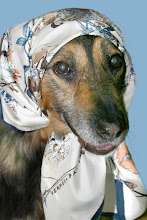

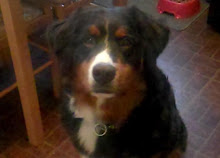

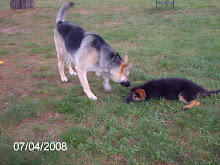
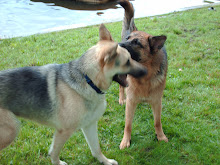
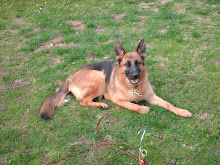
lr2.jpg)


